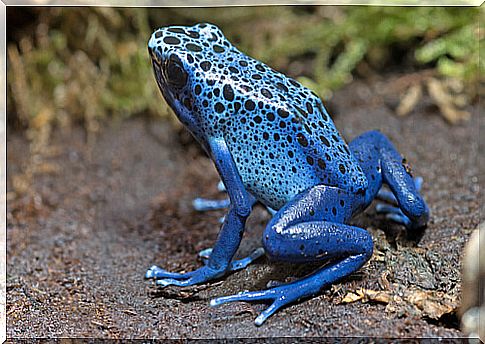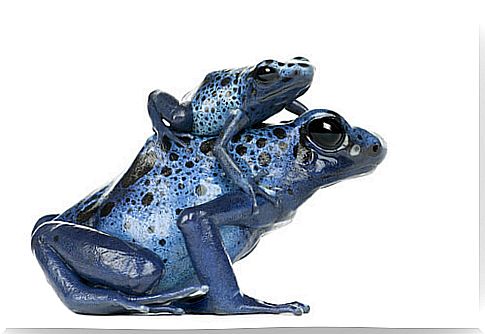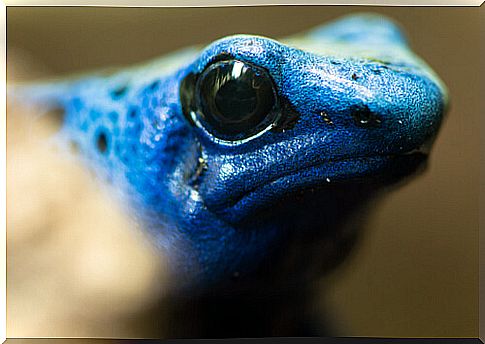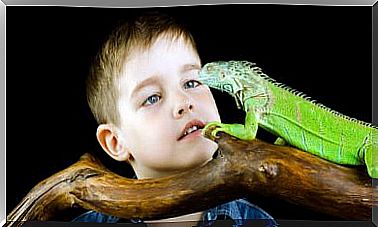The Blue Arrow Frog Or Dendrobates Azureus

The blue arrow frog is part of the Dendrobatidae family, which groups species of poisonous frogs. This family of amphibians displays the brightest and most beautiful colors on Earth.
In general, the striking designs of this family of frogs are deliberately flashy to avoid potential predators, a defensive tactic called aposematic coloration.
Characteristic adaptations of the blue arrow frog
First, the blue arrow frog is covered with a sticky skin that helps it retain moisture. Also, this skin allows the tadpoles to adhere to the adults as they move from place to place.
On the other hand, it should be noted that Dendrobates azureus has toxins in the skin that can paralyze or kill potential predators. Together, the bright blue color of this frog’s skin serves as a warning to predators not to eat it.

The famous poison of his skin
It is common for this family of amphibians to accumulate an intriguing variety of alkaloids in their skin glands. Many of these alkaloids demonstrate anesthetic, analgesic, and cardiotonic activities. Not surprisingly, the dendrobatida family includes some of the most toxic animals on Earth.
For example, the little golden poison frog has enough venom to kill 10 adult males. Previously, the indigenous people of Colombia used the powerful poison in blowgun darts to hunt, hence the common name of the genus.
Some studies suggest that toxic compounds are taken up by their prey, including ants, termites, and beetles, which in turn acquire them from plants. Interestingly, poison frogs raised in captivity and isolated from insects in their native habitat never develop poison.
Distribution and habitat of the blue arrow frog
This species is diurnal. Its range is restricted to the southernmost part of Suriname, South America, in the “forest islands” of the Sipaliwini savanna.
This frog is endemic to humid forests, it is always found in rocky areas surrounding streams, with temperatures that drop to 22-27 degrees Celsius at night. It usually stays on the ground, but is also found at heights of up to 5 meters in trees.

Reproduction
The blue arrow frog reproduces between the months of February and March. The female lays 5-10 eggs at a time. Those eggs are laid in humid areas, but they are not completely submerged in water.
About 14-18 days after the eggs are laid, the tadpoles hatch. Then it takes 10-12 weeks for them to metamorphose into adult frogs.
Parental behavior of the blue arrow frog
The blue arrow frog species displays unusual breeding habits, including carrying eggs and tadpoles on its back. Although this is not a unique habit among amphibians, the dedication of the males is. Being the ones who take care of the vital transport tasks.
A 2019 study delved further into the role of this parental transfer in the dispersal of the species. These scientists discovered that the frogs moved their young farther and to many more sources of water than expected.
The authors speculate on the adaptive benefits of ensuring the dispersal of their offspring to reduce competition and possible inbreeding.
Conservation status of the species
The blue arrow frog species is threatened due to habitat destruction and illegal collection for the pet trade. Zoos around the world are working on conservation projects to protect the wild population of these frogs.
Finally, when it comes to the life expectancy of blue poison frogs, it should be noted that this is usually quite long. In the wild, these frogs live 4-6 years, and in captivity, they can survive up to 12 years.
Who would have thought that such a strikingly colored animal could dodge predators for so long?








